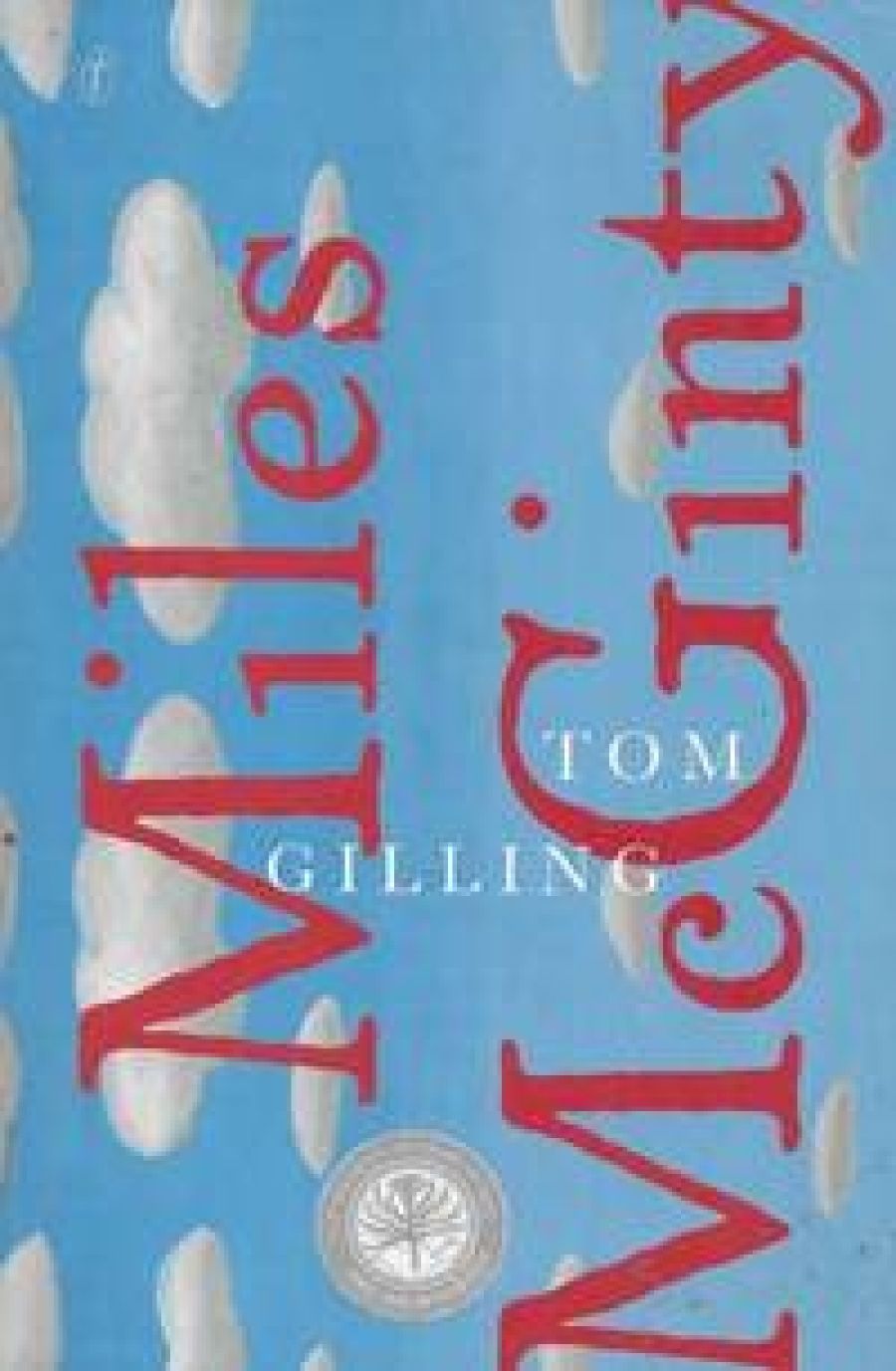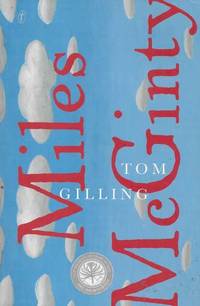
- Free Article: No
- Review Article: Yes
- Article Title: Don't Look Down
- Online Only: No
- Custom Highlight Text:
Tom Gilling’s first novel, The Sooterkin, was an engaging and self-conscious oddity. Set in early nineteenth-century Tasmania, it had at its centre the striking conceit of the Sooterkin itself, a child born to a former convict and who is, to all intents and purposes, a seal. The Sooterkin was a critical success, inviting comparison to Peter Carey for its Dickensian energy and its playful engagement with the slippery rudiments of the Australian imagination.
- Book 1 Title: Miles McGinty
- Book 1 Biblio: Text, $27.50 pb, 198 pp
- Book 1 Cover Small (400 x 600):

- Book 1 Cover (800 x 1200):

Set in the New South Wales of the 1860s and 1870s, the novel is ostensibly the story of the love affair between two young misfits: Miles McGinty, the overly tall, prematurely handsome, flight-obsessed illegitimate son of an actress, and Isabel Dowling, the tomboyish, deliberately unconventional youngest daughter of a respectable middle-class family. Born on the same day in 1856, their mothers’ labours commencing in the theatre where Miles’s mother is playing Hamlet, the two grow up under wildly different circumstances, Isabel in respectable Stanmore, Miles on the road with his mother.
While Miles is still a child, his mother becomes involved with a travelling showman, Balthasar the Levitator. Balthasar, an enigmatic combination of showman, con artist and storyteller, becomes a sort of father-figure to Miles, while Miles – ‘an unusually amenable subject’ for levitation – becomes part of Balthasar’s act.
As with much in Gilling’s novel, the precise nature of Balthasar’s act is never quite resolved. This sort of reluctance to resolve possibilities recurs throughout the novel, but Balthasar – a Polish émigré who has trouble remembering his original name – is probably its most potent embodiment. A living exercise in self-invention, he’s as unreliable as the stories he tells as part of his act. Miles’s career as a subject in Balthasar’s act falls victim to Miles’s desire for a more concrete form of flight when he comes into the possession of the notebooks of failed balloonist Tobias Smith. Miles adopts Smith’s project to build a powered aircraft. Isabel, meantime, who has had her own encounter with flight, has fallen in love with Miles and, when Miles shares his dream of flight with her, she becomes a part of it.
With its cast of unreliable levitators and aerialists and its gawky, unconventional love affair, one could almost read Miles McGinty as a playful variation on Peter Carey’s Illywhacker and Oscar and Lucinda. Certainly, Miles McGinty’s echoes of those two novels are so marked that it seems hard to imagine them as anything but deliberate, at least inasmuch as anything in a novel as slippery as Miles McGinty could be called deliberate.
Like Carey, Gilling trades in that brand of highly coloured realism that is often called magical, although I suspect the latter term is misleading, not least because it focuses attention upon the detail rather than the broader textures of the writing. In fact, Gilling’s writing is probably more accurately described as Dickensian, the magical aspects merely one element in an essentially theatrical conception of fiction, with all the tendencies to melodrama and sentimentality that implies (and indeed relies upon) and offering highly animated sketches of characters rather than attempting to render inner lives.
The trick for writing of this sort is to avoid a descent into cartoonish self-parody, a fictional Punch and Judy show. E.M. Forster wrote of the ‘immense vitality’ that Dickens lends his characters. Something similar might be said of Carey, his novels (at least until True History of the Kelly Gang, which seems to me to be a move towards something sparer and deeper) transcending the limitations of their pieces by virtue of the fecundity and vitality of their creator’s imagination, their energy drawn from the contradictory energies of their ambivalences.
Gilling, however, seems to be engaged in something lighter, his novel inspirited not by some deeper creative energy but by its own bravura. It is an exercise in self-suspension, the novel pulling itself up by its own bootlaces until it seems to float free. The trick is to distract the audience’s attention from what’s holding it there, something Gilling manages by never letting the patter falter. Don’t look down, the book seems to be saying, just watch the balls.
It’s a curious and not unpleasant sensation, oddly appropriate to the novel’s games with the uncertainties of history and self-invention. But there’s something almost evasive about it as well, the novel seeming curiously difficult to pin down, not so much refusing easy classification as evaporating whenever one tries to get it into focus.
None of this is to deny the charms of Gilling’s writing, nor the pleasure that can be found in his game-playing and circus tricks. But, even as it rises, Gilling’s performance in Miles McGinty provokes the same unease the act of that ‘expert bullshitter’ Balthasar the Levitator provokes: an uncomfortable uncertainty as to whether the novel is truly levitating or whether it’s just smoke and mirrors.


Comments powered by CComment